
 |
|
The Kirtling Cricks Part 2 William Crick’s Origins and Family – with some additions and corrections
The Rationale of This Page This page – The Kirtling Cricks Part 2 – is designed to be read in conjunction with The Kirtling Cricks Part 1 This page (i.e. Part 2) is based on the full transcripts of census data from the 1841, 1851, 1861, 1871 and 1901 censuses. Previously, I had only the “index” to the census data – a sort of a teaser précis. Hence, I had to make some guesses and assumptions, some of which have turned out to be off the mark. In addition, more detail has become available from the full census data (e.g. locations of where people lived, relationships, status in the household, county of birth etc).
A new version – later – probably much later – will put it all together, dealing with each family’s or individual’s story from start to finish rather than breaking the stories by year of census. This summary report of the Crick genealogy may help identify people as you read through this page. Because the genealogy software that created the report wasn't designed to cope with marrying cousins, it duplicates descendant lines. Census Information The very first country-wide census in England took place on the night of 6/7 June, 1841. Every person in every household was counted – as they were in subsequent censuses. The process involved the appointment of ‘enumerators’ – usually volunteer schoolmasters, clergymen and others with some education. The enumerators visited households with forms to be filled in. Often, the enumerator would have to fill in the forms for the householders, many of whom were illiterate. The forms were then copied into printed books of blank forms.
Not surprisingly, especially for the first census, things got a bit messy and inconsistent. There were instructions about how to record the fact that some people in the same dwelling were not necessarily of the same household; how to indicate a new dwelling; and how to record ages (exact age for children up to 15; and rounded down to the nearest 5 for people 15 and above). However, enumerators did not always apply the instructions consistently, especially relating to capturing ages. It’s worth noting that the practice of rounding down ages to the nearest 5 (that means, of course ‘divisible by 5’) explains the inconsistencies of recorded ages from one census to the next. It was mostly a case simply of sometimes the ages were rounded down and sometimes not. Lastly, there were problems in deciphering householders’ or enumerators’ handwriting and annotations, which might have lead to inconsistencies. 1841 Census Let’s start with Thomas and Sarah, parents of William of Wentworth, and their family: ‘our’ Thomas and Sarah! The first piece of new information is their place of residence, which, in 1841, is Malting Green, part of Kirtling. Thomas and Sarah (both aged 45 (rounded down to the nearest 5)) are listed with their children, Sarah, 15, Joseph, 13, Thomas, 11, William, 8, Cathrin (sic), 6, and Richard, 2. A slash (/) then indicates that Edward, 80, is in the same dwelling but regarded as a separate ‘household’. Simply put, Sarah’s father, Edward, was living with them, his wife, Catherine (née Wright), having died in 1831. William and Edward are each described as ‘agricultural labourer’. Edward is noted as being born outside Cambridgeshire. Thomas’ and Sarah’s eldest two daughters, Rhoda and Ann/Anne (also referred to as Mary Anne), are not living with their parents.
Ann 15, female servant, is living at Oaktree Farm with Stephen and Elizabeth Pettitt, both aged 70. The dwelling is split into two ‘households’. One consists of Stephen and Elizabeth; the other consist of John Dawson, 20, farmer, born outside Cambs.; Joanah Dawson, d (daughter), 14, Cambs.; Susanna, d, 9, Cambs; Ann; and John Wright, 12, male servant, Cambs. Ann is, in fact, 18 by 1841 (the rounding down to the nearest 5 becomes misleading at this age). I thought at first that she seems young to have left home, especially when there are so many cases of children a lot older staying at home, including with husbands and wives. Maybe she left home because of the large family she came from or she wants to emulate her older sister, Rhoda, or because she’s something of a rebel! But her age doesn’t look all that out of kilter when you see John Wright, aged 12, and Moses Burling, aged 13, both living away from home and employed as servants. Contrary to assumptions I had previously made, there may be random Cricks that have arrived after the first lot that I recorded in Part 1. For example, in the 1841 census, there is a Sarah Crick recorded as being born outside Cambridgeshire. She’s living at Parsonage Farm. The data indicates that the ‘dwelling’ consists of George Collin, 30, farmer, Cambs.; William Danby, 35, builder, born outside Cambs.; Mary Danby, 30, independent, born outside Cambs.; Ann Crick, 20, female servant, born outside Cambs.; and Samuel Bradford, 15, male servant, Cambs. Again there are two ‘households’, one consisting of George and the other of everyone else. Is it coincidence that the name Danby comes up with both Rhoda and this outside Sarah? Perhaps Stephan Danby, the publican, had arranged accommodation at Parsonage Farm for his brother, arriving from outside Kirtling, and also for Ann, the latter at the behest of Rhoda, who might be her cousin. Geffery, 50, and Richard, 25, are living at Malting Green. Living in the same dwelling, but listed as a separate ‘household’ are Mary Taylor, 35, [no occupation listed], born outside Cambs.; William Taylor, 8, born outside Cambs.; and George Taylor, 2 mo, Cambs. Geffery and Richard are part of the other ‘household’, along with George Jarves, 25, maltster, born outside Cambs.; and Susan Chambers, 15, born outside Cambs. Richard is listed first of the four names, which might suggest he was the principal renter of the dwelling. George, 35, and Charles, 8, are living in a separate dwelling by themselves at Malting Green. This is the Charles that will emigrate with his cousins, Thomas and William. William and Abigail are living at Upend Hamlet. William was a son of John and Mary (one of the first Crick arrivals in Kirtling) and a brother of Thomas (William of Wentworth’s father) and of Geffery. William and Abigail are the parents of George. William is 55 and Abigail is 70. William is described as a ‘cooper’ (a cooper is a maker or repairer of casks and barrels).
It turns out that Maria is the daughter of Jabez and Mary Pettitt (née Crick). Jabez Pettitt and Mary Crick married on 29 April 1836. They had two children, Maria, born 24 July 1836, and Philip, born 9 Dec 1838. In the baptism register, Jabez is recorded as a shoemaker. An entry in the 1841 census has a Thomas Pettitt, 50, shoemaker, and Anne Pettitt, 50, at Upend Hamlet, with, seemingly, 10 children. The eldest is Jabez, 25, and the youngest is Philip, 3. Except that Philip is actually the son of Jabez and Mary. Mary, presumably, is the Mary that appears in the burials register as ‘Mary Pettitt, 22, 27 February 1839’ – a little over two months after Philip’s birth. It’s not obvious, however, who Mary is in terms of the Crick family at that time. There’s no Mary in the baptism records that would fit her profile. We have to wait for the 1851 census to discover a vital clue. 1851 Census The 1851 census reports that there were 178 houses occupied and 2 unoccupied in the Kirtling area. There were 909 people: 471 males and 438 females. Two new items of information introduced in 1851 were family relationships and county of birth. The 1841 census didn’t record relationships (there were a couple of exceptions), and indicated only whether someone was or was not born in Cambs. These new items of information help to put pieces together. B Sarah (also called Sally), who was living at home aged 15 in 1841, died in 1845 at the age of 19. I recorded her story in Part 1. Briefly, she married Odadiah (sic) Claydon a few weeks after the 1841 census, being already 6 months pregnant by then. They had two children, David (b 1841) and Obediah (sic) (b 1844). The children are listed in the 1851 census as living with their father and his new wife, Eliza. Meanwhile, Ann (was she a rebel?) has moved back home with a 7 year old daughter, Eliza. Ann is now 28 – and unmarried. Her daughter is recorded in the baptism register as Eliza Anne Price Crick. I assume that, by including Price as a baptism name, Ann was pointing to the father. In the 1851 census, there is a John Price, 59, widower, farmer; but, probably closer to the mark, is his 31 year old unmarried son, Reuben Price. John and Reuben Price are living at Mill End Farm. Thomas and Sarah have added Elizabeth to their family. She was born in Aug 1841 and is listed as 10 in the 1851 census. So the household, in addition to Thomas and Sarah, is now Ann, 28, Joseph, 22, Thomas, 21, William, 18, Catherine, 16, Richard, 12, Elizabeth, 10, and Eliza, 7. They are living at the Green. Elizabeth and Eliza are each described as ‘scholar’, indicating, presumably, that they are attending school. It’s interesting to note that, in the marriage register, Elizabeth is the only one who signs her name; the others could manage only an ‘X’. George and Charles are also living at the Green in their own dwelling (not sure if this suggests a house, cottage or separate room). George is listed as head of the household, and Charles as his son. Richard and Geffery are still living with the same family as in 1841, but have moved to the Green. In the 1841 census, Mary Taylor was listed first, implying it was her place in some way or other. Richard is now listed as head of the household, with his father Geffery and Mary Taylor listed as lodgers. Mary’s two children, William and George, are also there. William (as in William and Abigail) is listed as a ‘lodger’ and ‘widower’. He’s living with Thomas and Mary Claydon at the Green. His age is listed as 60 (in fact, he was 66) and he is described as ‘cooper’. Abigail died two years previously in 1849 in the Union Workhouse, Newmarket. She would have been 79. On the face of it, you might think that having a trade, such as a cooper, would have meant that William could provide for them. Perhaps Abigail had become infirm or unmanageable in some way or another. But somewhere between 1841 and 1849, she moved to the workhouse, where she died. I previously provided this link that gives some insight into what life would have been like there. It’s a sobering read. What about Maria Pettitt, aged 5 in 1841 and living with the ‘other’ Thomas and Sarah? By now, Sarah has died. She died in 1849. Thomas, 67, is listed as head of the household, consisting of Maria Pettett (sic), 14, and John Purkiss, listed as a visitor. (There’s inconsistency in spelling Pettitt/Pettett!) The 1851 census lists Maria as ‘granddaughter’ of Thomas (and, of course, Sarah). That’s a new piece of information, indicating that Mary was Thomas’ and Sarah’s daughter. Mary would have been born in 1817. Remembering she doesn’t show up in baptism records, she could have been the daughter of Sarah before she met Thomas (we know that Sarah was born outside Cambs., but we don’t know precisely when; nor do we know where or when or if Thomas and Sarah were married (see Part 1)); or Thomas and Sarah might have left Kirtling at some time for a period, during which Mary was born and baptised elsewhere – but returned to live in Kirtling before Mary was married; or she could simply not have been baptised. The first scenario would have her being born before their baptised children, Mathew (b 1811) and William (b 1812). That would make her too old to be the Mary Pettitt who died aged 22 in 1839. The second scenario is feasible, but the time of absence would have to be after Mathew and William were born. It doesn’t seem all that likely that they would move temporarily with two small children. The third option might seem inconsistent with having Mathew and William baptised, but it’s possible. There still is the question as to how it came about that Maria ended up with her maternal grandparents, while Philip ended up with his father and his paternal grandparents. First, there’s no way of knowing what the living arrangements were before Mary died. It’s likely that Jabez and Mary, with the two kids, were living with one or other set of grandparents. Given that Jabez was a shoemaker, like his dad, they were probably living with his parents. Whether Mary was ill after Philip’s birth and was being cared for by her mum or whether she died unexpectedly from a fever, it’s impossible to say. Whatever happened, Sarah and Thomas probably took Maria on after Mary’s death to share the burden, as it were, given that the Pettitts already had a house full of kids. In 1851, Thomas and Ann Pettett (sic), Maria’s grandparents, are living at Upend Street, with their ages now given as 61 and 64 respectively. Thomas is described as a shoemaker, employing 2 sons. In the household are Mary Ann, d, 34; Samuel, s, 22; Elisha, s, 19; William, s, 17; and Philip, gs, 12. All the four boys are described as shoemakers. There’s no mention of Jabez in the census anywhere in Cambridgeshire. 1861 Census Our Thomas and Sarah’s situation has changed significantly since the 1851 census. By now they have only two children at home, Richard, 22 and Elizabeth, 19. They are living at Cowling Road Cottage. Their sons, Thomas and William, left for Australia in the December of 1851, not long after the 1851 census. Ann married John Barrow in 1859. They don’t show up at all in the 1861 census for Cambridgeshire, so seemingly left the county altogether. Joseph, who was living at home in 1851, also doesn’t appear in the Cambridgeshire census for 1861, but turns up in the Suffolk census in Great Bradley. He has married Elizabeth (née n/k) and has two children, Thomas 2 and William 1. They are listed with the surname ‘Creek’, but this gets corrected in the subsequent censuses. He stays in Great Bradley and he and Elizabeth continue to have children.
George is living at Cowling Road Cottage, but without Charles, who went to Australia with his cousins, Thomas and William. Geffery and Richard are at Cowling Road Cottage. Richard’s name appears first and is described as ‘agricultural gardener’. Geffery is described as ‘lodger’ and ‘agricultural labourer’. The fact that Richard keeps getting top billing, as it were, and has now got to being an agricultural gardener (I’m assuming a rung above labourer) makes be query whether my first hypothesis about him and the relationship between the two was correct (see Part 1). William, widower of Abigail, doesn’t appear in the 1861 census. He died in 1852, just a year after the 1851 census. It’s impossible to say how long Abigail spent at the workhouse, but William stayed on in Kirtling for a couple of years after Abigail’s death before he followed her into the workhouse, where he spent up to about a year before his death. I had thought in Part 1 that they might have gone into the workhouse together, but the more detailed census data confirms that that wasn’t the case. Abigail would have died there alone – as did William in turn.
Thomas Crick, described in the 1851 census as her grandfather, is now living alone at Upend Farm. He is 75. He seems to have his own ‘dwelling’, but close to his eldest son Mathew and his wife, Caroline, with the two children still living with them, James Sidney, 12, and Emeline, 6. Thomas’ other son, William, and his wife, Sarah, have moved to Upend Green. The 1861 census records Sarah’s place of birth as Posslingford, Suffolk. Thomas Pettitt, Maria’s other grandfather, is still around, but there’s no Ann. There’s an entry in the burial register for ‘Ann Pettitt, 73, of Upend in Kirtling 30 January 1860.’ 1871 Census Our Thomas and Sarah (i.e. William of Wentworth’s parents) have moved back to the Green. They are by now 79 and 78. They still have Richard, 32, and Elizabeth, 29, living at home. Thomas and Richard are each described as ‘labourer’. Elizabeth has produced a son, John, who was born in 1866, listed in the census as aged 5. In the baptism register he is recorded as John William Foreman Crick. Assuming the name John has some relevance as well as Foreman, the likely father would seem to be John Foreman, 32, labourer, of Upend Hamlet. Richard and Geffery are also at the Green. Richard, 56, is described as head of the household and Geffery, 82, as a lodger. Each is further described as ‘parish pauper’. What happened to Richard’s status as ‘gardener’ and why, at 56, is he now penniless? There’s no George (Charles’ father) in the 1871 census. He died two years earlier in 1869. I mentioned in Part 1 that his place of death was listed in the church records as the Union Workhouse, Newmarket. He obviously moved there sometime between 1861 and 1869. In the 1871 census for Great Bradley, Suffolk, Joseph and Elizabeth are listed with seven children: Thomas, 13, William, 11, Catherine, 9, Emily, 7, James, 5, Robert, 3 and Golding, 1.
Thomas Pettitt is living at Binge Park. He’s now 81 and described as ‘labourer’. 1881 Census I don’t have this information. I don’t think it was available on microfiche. The lack of this data is a gap, but there are other ways of getting it, which I may resort to. The availability of data on the Internet varies from shire to shire. In the 1881 census for Great Bradley, which is freely available, Joseph and Elizabeth have added John, 8 and Richard, 6 to their family. Emily has become Emma and Golding has become Golden. By now, our Thomas and Sarah have died; he in 1871, she in 1879. The 1871 census had taken place on 2/3 April 1871. Thomas died (buried, to be precise) on 29 June 1871. Sarah had 8 years as a widow. Happily, I trust, they both died at home in Kirtling. All the records point to that. 1901 Census By now, you can count on your fingers the number of people in Kirtling with Crick as their surname. They’re essentially only the family of James Sidney Crick, who is a son of Mathew and Caroline (née Pettitt) Crick. James Sidney’s wife is Elizabeth (née Goody). The 1901 Great Bradley census has Elizabeth Crick, but no Joseph. He presumably has died in the interim. Of interest is the appearance of Richard (our Thomas’ and Sarah’s second youngest). He turns up as a boarder, seemingly with Joseph’s family. He was Joseph’s brother. Map of Kirtling and Surrounds Here is a map that identifies several of the places that are mentioned in the censuses. You can manipulate the map to get a better perspective of where Kirtling is relative to places such as Newmarket , Cambridge and London. You can also go south and find Gravesend, where William, Thomas and Charles boarded the Sibella in December of 1851.
Epilogue Not surprisingly, there are stands from the first Kirtling Cricks spread far and wide. I have had emails from a third cousin in Manitoba, Canada, who is a descendent from Rhoda, William of Wentworth’s sister. I’ve had contacts from several descendants from William of Wentworth. I’m sure there are many others out there that are related to the first Kirtling Cricks.
|
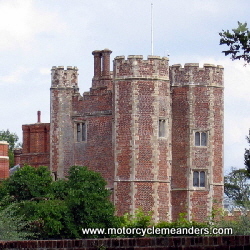
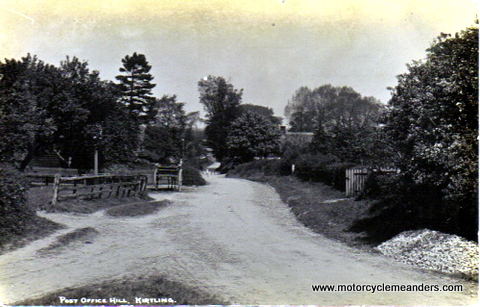 It is copies of these filled-in blank forms in the printed books that are now on microfiche. The data on the microfiche represents all the information obtained in the censuses. The folio numbers that I had referred to previously and that were unexplained in the “index” to the census data, turn out to be later additions by the microfiche producers to indicate the pages of the book on which an entry appears. The ‘A’ supposedly indicates the page on which the page number is printed; and the ‘B’ the reverse side of the same page. The key point here is that, for practical purposes, the folio numbers can be ignored. I have not used them on this page but had referred to them in Part 1. They really don’t mean anything relevant to understanding the situation on the ground; and they certainly do NOT have any relationship to who might be in a single dwelling or household (as I had earlier surmised).
It is copies of these filled-in blank forms in the printed books that are now on microfiche. The data on the microfiche represents all the information obtained in the censuses. The folio numbers that I had referred to previously and that were unexplained in the “index” to the census data, turn out to be later additions by the microfiche producers to indicate the pages of the book on which an entry appears. The ‘A’ supposedly indicates the page on which the page number is printed; and the ‘B’ the reverse side of the same page. The key point here is that, for practical purposes, the folio numbers can be ignored. I have not used them on this page but had referred to them in Part 1. They really don’t mean anything relevant to understanding the situation on the ground; and they certainly do NOT have any relationship to who might be in a single dwelling or household (as I had earlier surmised).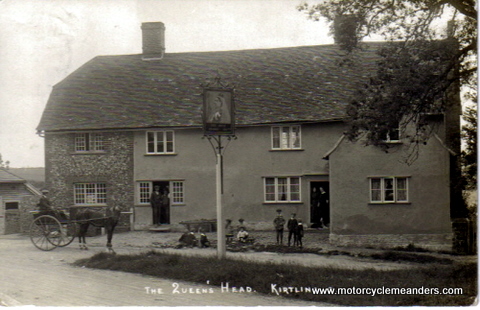 Rhoda, 20, female servant, is living at Queens Head. Queens Head is the local public house – the pub. The ‘dwelling’ consists of Stephen Danby, 40, publican, born outside Cambs.; Ann Wells, 30, female servant, born in Cambs.; Rhoda; and Moses Burling, 13, male servant, Cambs. The census data indicates that there were two ‘households’: one consisting of Stephen and one consisting of the rest. Queens Head must have had rooms or a cottage for long-term rent.
Rhoda, 20, female servant, is living at Queens Head. Queens Head is the local public house – the pub. The ‘dwelling’ consists of Stephen Danby, 40, publican, born outside Cambs.; Ann Wells, 30, female servant, born in Cambs.; Rhoda; and Moses Burling, 13, male servant, Cambs. The census data indicates that there were two ‘households’: one consisting of Stephen and one consisting of the rest. Queens Head must have had rooms or a cottage for long-term rent. 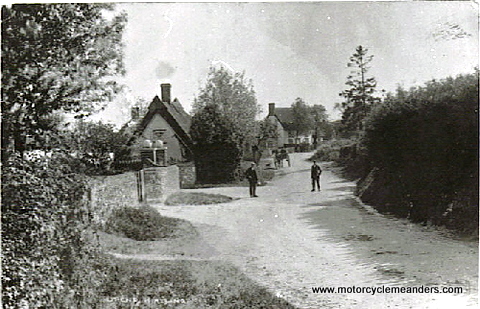 The ‘other’ Thomas and Sarah (i.e. NOT our Thomas and Sarah, but Thomas, son of Edward and Catherine), are living at Upend Hamlet. Thomas is 55 and Sarah is 65. With them are their son, William, 25, and new daughter-in-law, Sarah (née Ling), 25. William and Sarah got married in 1840 (no date given in the church records apart from the year). Also living with them is Maria Pettitt, 5. The data breaks up the dwelling into two ‘households’. Maria is listed as one ‘household’ and everyone else as the other. This is very puzzling. Who is Maria Pettit and why is she living here, aged 5, as a separate ‘household’? This took some sorting out.
The ‘other’ Thomas and Sarah (i.e. NOT our Thomas and Sarah, but Thomas, son of Edward and Catherine), are living at Upend Hamlet. Thomas is 55 and Sarah is 65. With them are their son, William, 25, and new daughter-in-law, Sarah (née Ling), 25. William and Sarah got married in 1840 (no date given in the church records apart from the year). Also living with them is Maria Pettitt, 5. The data breaks up the dwelling into two ‘households’. Maria is listed as one ‘household’ and everyone else as the other. This is very puzzling. Who is Maria Pettit and why is she living here, aged 5, as a separate ‘household’? This took some sorting out.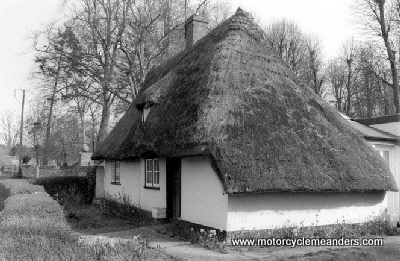 y now Rhoda has married Giles Pettitt and they are living at Horn Lane with their four children (they were married in 1842).
y now Rhoda has married Giles Pettitt and they are living at Horn Lane with their four children (they were married in 1842).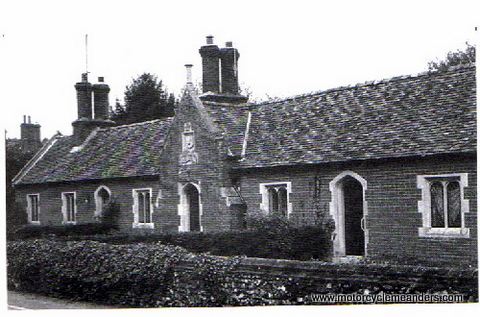 Catharine also moves out of Cambridgeshire.
Catharine also moves out of Cambridgeshire.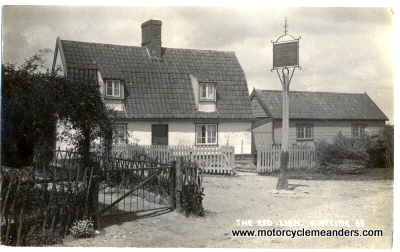 More on the Maria Pettitt story. Maria is now living in her own dwelling at Upend Green. She is listed as lodger, unmarried, 24. In the occupation column, there is the following “(no occupation – added in another hand)”. She is living with Arthur James Nunn Pettitt, son, aged 3, born in Kirtling Cambs. Again, we see a pointer to a child’s paternity!
More on the Maria Pettitt story. Maria is now living in her own dwelling at Upend Green. She is listed as lodger, unmarried, 24. In the occupation column, there is the following “(no occupation – added in another hand)”. She is living with Arthur James Nunn Pettitt, son, aged 3, born in Kirtling Cambs. Again, we see a pointer to a child’s paternity!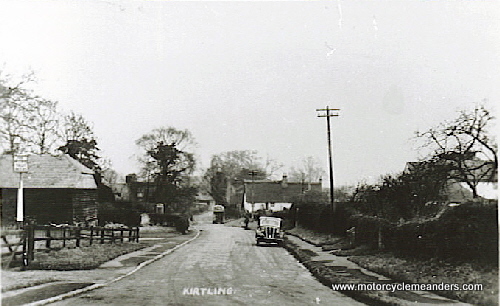 And what about Maria Pettitt? She’s still living at Upend Green, but I can’t say whether it’s the same dwelling or not. The household now consists of Sarah Crick, head of household, widow, 69, parish pauper; Maria Pettett (sic), lodger, unmarried, 39, shoe binder; Arthur, 13,lodger; and Allis, 10, lodger, scholar. Sarah is the widow of William, son of the ‘other’ Thomas and Sarah (Maria’s grandparents). Sarah had lived with parent-in-law, Thomas and Sarah, when she and William first got married (cf 1841 census). Maria was living with them also at that time, so there has always been a relationship between Sarah and Maria. Sarah is obviously penniless, being classed as a parish pauper. Interestingly, Maria is now being described as a shoe binder. She’s in the same trade as her father, Jebez, and his father before him. It’s sad that nowhere along the line did Jebez ever seem to claim her. It’s impossible to say whether he even kept up contact. He doesn’t seem to have stayed around in Kirtling for long. So, with no Mum, brought up by elderly grandparents, no husband, she struggled on all those years, having two children along the way; and maintaining a family trade from her Dad’s side of the family. That suggests, as a very young girl, she must have hung around the shoe-making shop. In the 1841 census, her Pettitt grandparents and her father also lived at Upend Hamlet, where she lived with Thomas and Sarah, so she presumably played at both dwellings and got involved in the trade. In the 1851 census, both households were listed at Upend Street, which might have been the same place. Anyway, they were still close to one another. Maria by then was 14. Her father had left Kirtling (and Cambridgeshire), but her young brother was still there with his grandparents. Philip was 12 and seemingly working as a shoemaker. Maria would have no doubt warmed to that and probably learnt from him as well as from her grandfather.
And what about Maria Pettitt? She’s still living at Upend Green, but I can’t say whether it’s the same dwelling or not. The household now consists of Sarah Crick, head of household, widow, 69, parish pauper; Maria Pettett (sic), lodger, unmarried, 39, shoe binder; Arthur, 13,lodger; and Allis, 10, lodger, scholar. Sarah is the widow of William, son of the ‘other’ Thomas and Sarah (Maria’s grandparents). Sarah had lived with parent-in-law, Thomas and Sarah, when she and William first got married (cf 1841 census). Maria was living with them also at that time, so there has always been a relationship between Sarah and Maria. Sarah is obviously penniless, being classed as a parish pauper. Interestingly, Maria is now being described as a shoe binder. She’s in the same trade as her father, Jebez, and his father before him. It’s sad that nowhere along the line did Jebez ever seem to claim her. It’s impossible to say whether he even kept up contact. He doesn’t seem to have stayed around in Kirtling for long. So, with no Mum, brought up by elderly grandparents, no husband, she struggled on all those years, having two children along the way; and maintaining a family trade from her Dad’s side of the family. That suggests, as a very young girl, she must have hung around the shoe-making shop. In the 1841 census, her Pettitt grandparents and her father also lived at Upend Hamlet, where she lived with Thomas and Sarah, so she presumably played at both dwellings and got involved in the trade. In the 1851 census, both households were listed at Upend Street, which might have been the same place. Anyway, they were still close to one another. Maria by then was 14. Her father had left Kirtling (and Cambridgeshire), but her young brother was still there with his grandparents. Philip was 12 and seemingly working as a shoemaker. Maria would have no doubt warmed to that and probably learnt from him as well as from her grandfather.